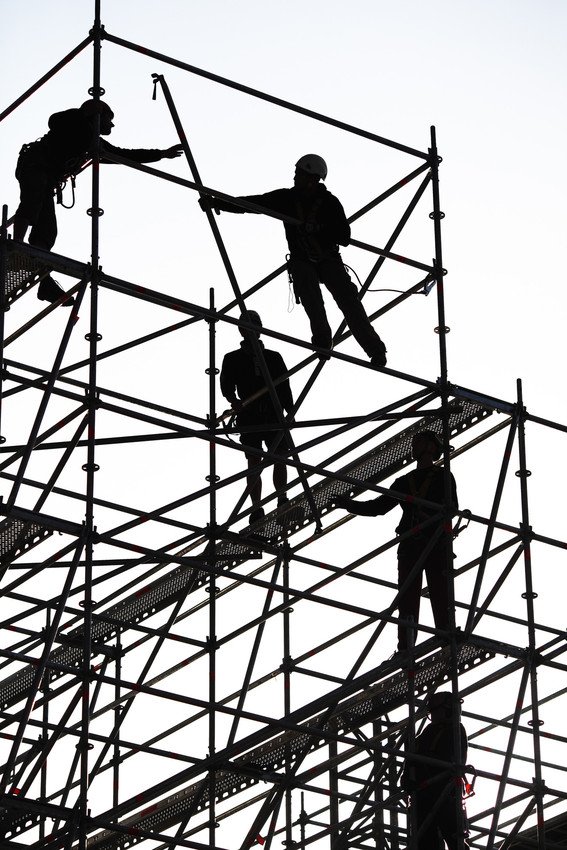The average builder, electrician, or plumber would do their proverbial prunes if another tradie pulled their work apart and threw product around site. Which is why I don’t understand how unclipping scaffolding or altering the scaffold design is ok?
It seems a little ‘Darwin Award’ to destroy something today, that your life could rely on tomorrow! Also, let’s not forget that erecting scaffolding is not as simple as it appears, load calculations, basic engineering, environmental and weather monitoring all go into safe scaffolding.
Recently, I got to see a presentation written by Graham Burke, Industry Adviser for Scaffolding, Access & Rigging NZ Inc. For those who don’t know Graham, he’s kind of like the Yoda of SARNZ. The following is a summary of what he said, with my own twist thrown in.
What do you need to know when designing a scaffold?
Dead Loads: The weight of all the components used to build the scaffold.
Live Loads: The projected weight of people, tools and materials which will be on the scaffold. Including:
- Environmental Loads: How could the scaffold design be affected by rain, snow, wind and even earthquakes?
- Impact Loads: What could fall onto the scaffolding (people, sheeting, hoists, other building materials)?
NB In most cases sheeted or wrapped scaffolds must be designed by a Chartered Professional Engineer to ensure wind flow and ballasting is accurate.
What do the legislation and SARNZ say?
Health and Safety at Work Act 2015 defines all the general stuff around risk management and dealing with multiple duty holders. This is especially relevant in scaffolding because the client, scaffold company and contractors using the scaffold all have overlapping duties.
The General Risk and Workplace Management Regulations 2016 defines the need for an emergency plan, especially for scaffolds that are higher than 5 metres, or wrapped.
SARNZ and WorksafeNZ have also developed best practice Scaffolding in New Zealand Guidelines and AS/NZS1170 Structural design actions is worth a read.
How do you make sure your scaffold design is safe?
Back to the “multiple duty holders” issue mentioned earlier. The scaffolder needs to be competent and the scaffold design needs to be fit for purpose. Once there is a handover to the “client”, it is the site supervisor (Person in Charge of the Business or Undertaking: PCBU) that is responsible for the scaffold and the safety of the workers on it. Here are few basics for keeping your scaffold safe:
- Scaff Tag – does it say “OK”, “Caution” or “Danger”? Has the scaffold been inspected by a competent person in the last week?
- Secure Components: All decking, toeboards, guardrails, ladders, other scaffold components, materials and equipment stored on the scaffold are secure.
- Drilled anchor points: Are they secure and do they have a safety have the correct working load limit?
- Water ballasts: If water ballasts are used, are secured to the scaffold and checked daily to make sure the water level is adequate?
- If in doubt: call the Scaff team to make sure it is safe.
Your Challenge for the Week: What would happen if a scaffold tipped over on your site?
This is an area that requires some serious thought. The site supervisor needs to understand:
- Who is in charge if something goes wrong?
- What to do if the scaffold collapses, someone has a fall, or a worker needs to be extracted from height?
- If a scaffold is wrapped and it needs to be cut, how will this affect scaffold?
- Is there a risk to other people near the site? (think about the fallout radius being up to 2.5 x the height of the scaffold)
- Who needs to be contacted if an event occurs after hours?
As always, please let me know if you have anything to add in regards to scaffolding construction and design phone Sarah on 0272 007 680 or email sarah@employmenow.co.nz.
